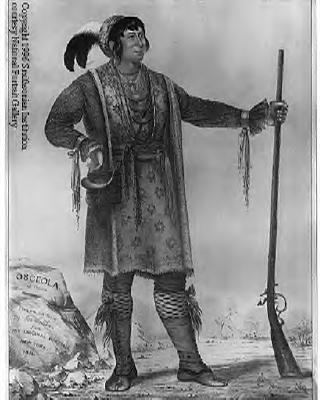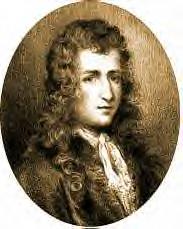|
|
Canku Ota |
|
|
(Many Paths) |
||
|
AN Online Newsletter Celebrating Native America |
||
|
January 27, 2001 - Issue 28 |
||
|
|
||
|
This Date In |
||
|
North American Indian History |
||
|
from On This Date in North American Indian History at http://americanindian.net |
||
| Jan. 27, 1943: | First American corn is found (5600 b.c.) |
|
|
|
| Jan. 28, 1833: | Today, a CHEROKEE commission of John Ross, John Baldridge, Richard Taylor, and Joseph Vann, address the Secretary of War in Washington, D.C.. They again state their unwillingness to negotiate with the federal government about removal, while the federal government is not living up to its previous agreements to protect them from the illegal actions of the State of Georgia. The CHEROKEEs are told their only hope is for removal. During subsequent discussions, President Jackson offers the eastern CHEROKEEs 3 million dollars for all of the lands east of the Mississippi River, excluding North Carolina. John Ross asks the President how he will be able to protect the CHEROKEEs in Indian Territory, if he cannot protect them from Georgia. The commission feels that the gold mines on CHEROKEE lands are worth more than the President's offer. |
| Jan. 29, 1832: | Folsom's CHOCTAWs finally reach the Kiamichi River area, their new home. Several people, and lots of animals, die while en route. Cholera will strike all of the groups. |
| Jan. 30, 1838: | SEMINOLE Chief Osceola dies today at Fort Moultrie, in Charleston, South Carolina. It is believe he has some sort of throat disease, others will say malaria, other say of a broken heart. |
|
(circa 1804-1838) |
|
| Jan. 31, 1797: | The treaty of May 31, 1796, with the SEVEN NATIONS of Canada, is officially proclaimed. |
| Feb. 1, 1839: | CHEROKEE Chief John Ross, and 228 other CHEROKEEs arrive today in Little Rock, en route to the Indian Territory, as part of their forced emigration. Quatie Martin Ross, Chief Ross' wife, will die today. She will be buried in Little Rock. |
| Feb. 2, 1887: | A law is passed which will prohibit the use of Indian languages in schools. |
| Feb. 3, 1847: | General Sterling Price reaches the fortified TAOS Pueblo. Cannonade proves unfruitful, so Price retreats to the city of Taos. |
| Feb. 4, 1847: | General Sterling Price returns to the fortified TAOS Pueblo, and 2 hours of cannonade are, again, unsuccessful. Price's troops attack and make some headway.. The cannon is moved closer, and now breaches a wall. The troops swarm through a hole in the church, and through other buildings. Many of the PUEBLO Indians try to escape, but are cut down by volunteers stationed on the east of the pueblo. One of the leaders of the revolt, Jesus de Tafoya, is killed in the fighting. |
|
|
|
| Feb. 5, 1802: | Orono was a PENOBSCOT Chief. During his life he was converted to catholicism, he fought in the French and Indian wars against the British settlements in New England, he fought on the American side during the Revolutionary War, and he is believed to have been 108 years old when he died on this date. |
| Feb. 6, 1682: | Today, Rene Robert Cavelier, Sieur de La Salle, and a force of 22 French and 31 Indians will reach the juncture of the Illinois and Mississippi Rivers. La Salle will then sail down the Mississippi to see if it empties into the Gulf of Mexico. The expedition will contact many Indian tribes along the way. Based on this expedition, La Salle will claim the Mississippi Valley, and Louisiana, for the French. La Salle will reach the Gulf of Mexico on April 9, 1682. |
|
|
|
| Feb. 7, 1983: | The INUIT Circumpolar Conference is held at the United Nations. |
| Feb. 8, 1887: | The "Dawes Severalty Act" regarding land allotments takes effect (24 stat 388-89). |
| Feb. 9, 1607: | There has been a long period of fighting between the Indian tribes of the POWHATAN Confederacy and the English colonists in Virginia. While leading a PASPAHEGH war party near Jamestown, Chief Wochinchopunck is seen by the colonists. A fight will ensue, and the Chief will be killed. |




